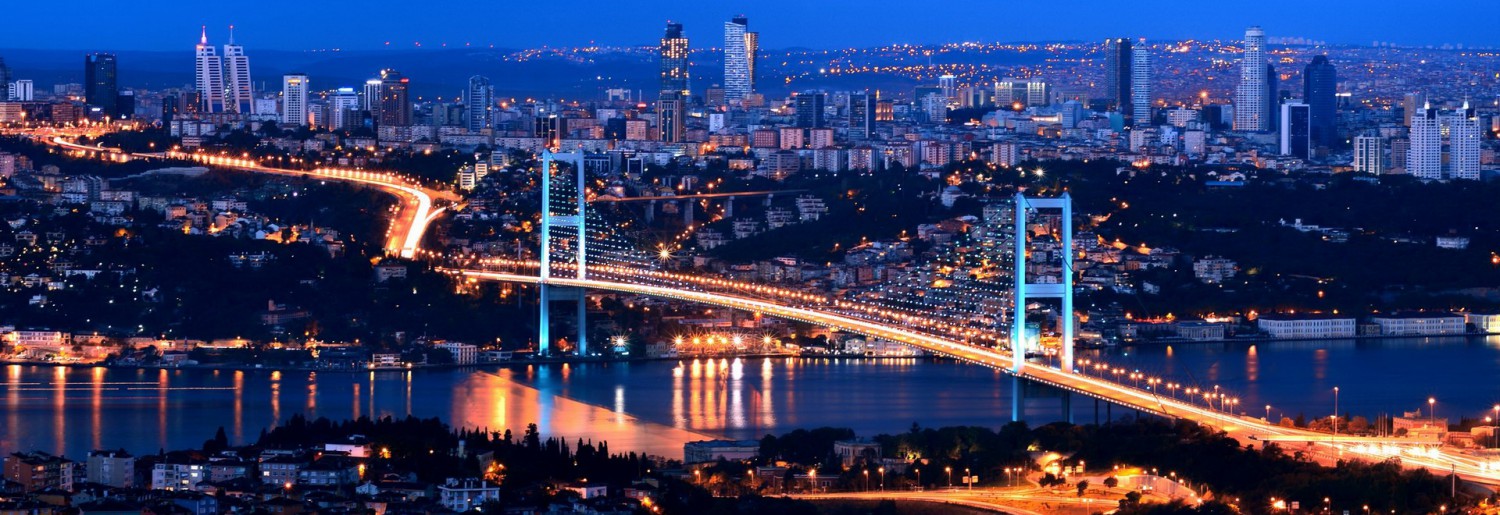Istanbul is the world’s one of the most ancient metropolis with its rich historical monuments and magnificent scenic beauties. With its 8.500 years of history, İstanbul has been the capital of Byzantine and and Ottoman Empires and for more than 1,600 years over 120 emperors and sultans where throned in this city. Ever since its establishment on this strategic junction of lands and seas, the city has been a crucial trade center.
The historic city of Istanbul is situated on a peninsula flanked on three sides by the Sea of Marmara, the Bosphorus and the Golden Horn. During its development, the city was enlarged four times; each time the city walls being rebuilt further to the west.
Surrounded by 5th century Roman city walls and stretching over seven hills, Istanbul is adorned by the masterpieces of both Byzantine and Turkish art and great mosques of the Sultans that crown the hills. The city presents an exquisite, majestic and serene silhouette from all directions. The Golden Horn, which is a very secure natural harbor, has played a significant role in the development of the city.
Fortune provided such advantages to Istanbul as a location at a junction where the main overland routes reach the sea, an easily defensible peninsula, an ideal climate, a rich and generous nature, control of the strategic Bosphorus, and a central geographical position in the ancient world.
As a capital of Empires, the city was not only an administrative, but also a religious center. The Patriarchate of Eastern Christians has been headquartered here since its establishment, and the largest early churches and monasteries of the Christian world rose in this city on top of the pagan temples. Within a century after the city was conquered, it was enriched with mosques, palaces, schools, baths and other architectural monuments that gave it a Turkish character, while some of the existing churches in ruins were repaired, altered and converted into mosques. More Jews settled in Istanbul than any other port, and here they built themselves a new and happy life after they were rescued from Spain by the Turks in the 15th century. Between the 16th century when the Ottoman sultans acquired themselves the title of the “Caliph of Islam” and 1923, the Foundation of Turkish Republic, Istanbul was also the headquarters of the Caliphate. Istanbul has always been a city of tolerance where mosques, churches and synagogues existed side by side. The city was adorned with a large number of dazzling and impressive works even during the period of decline of the Ottomans.
During this time, the influence of European art made itself felt in the new palaces, while the northern slopes of the Golden Horn, Galata and Beyoglu districts assumed a European character. Even when the Empire, which was a party to World War I, collapsed and the young Republic that replaced it moved the capital to Ankara, Istanbul did not lose its significance.
21st century Istanbul has a colorful and vibrant everyday life that goes on side by side, or under the shadows cast by, the Roman, Byzantine and Turkish monuments. With 14,5 million inhabitants out of the national population of 70 million, Istanbul is the most crowded city in Turkey. It is also the heart of the country with respect to imports and exports, entertainment, culture, education, shopping, tourism and the arts.
In the early years of the republic Ankara took precedence over Istanbul but between 1940 and 1950 the city regained its importance via a great structural change. New public squares such as Taksim Square, boulevards and avenues are constructed all around the city. Starting from the 1970s, with the undeniable effect of migrations from Anatolia, the city’s population began to rapidly increase. The fact that the city hosted different civilizations and life styles throughout its history transformed Istanbul a one big metropolis embracing multiculturalism and appreciating the beauty of different praxis.
Today, 20 percent of Turkey’s industrial labor and 38 percent of industrial workspace are provided by İstanbul which places the city in a central position for Turkey’s economic life. The city is also the country’s art center with international fairs, film, music and theater festival, museums, art galleries, exhibitions and sports organizations like İstanbul 2010 European Capital of Culture and İstanbul 2012 European Capital of Sport. Easy accessibility with two international airports, numerous meeting and convention facilities, superior accommodation choices, 21th century’s İstanbul is the world’s one of the most important metropolises.
